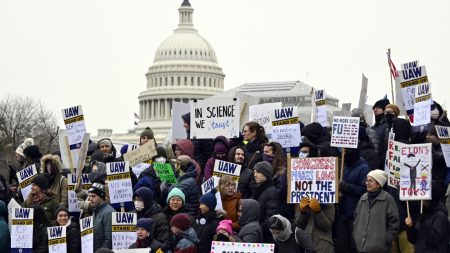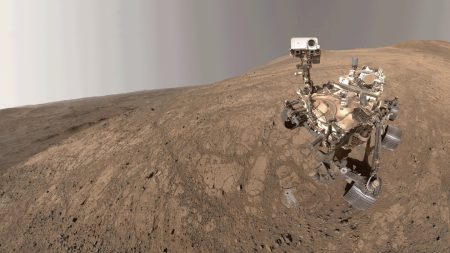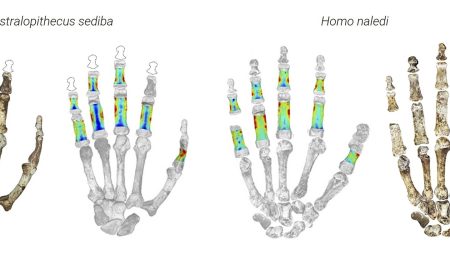Tuesday’s Solar Storm Highlights Frontlines for Northern Lights
NEW YORK (AP) — Dia of the Sun, Tuesday night marked another grand solar event: a strong solar storm expected to generate colorful auroras across a range of U.S. states, with parts of Canada experiencing even brighter displays. Space weather forecasts revealed massive bursts of energy from the Sun’s largest solar flares, generating night skies illuminated by auroras in locations such as Alaska, Washington, Oregon, Montana, North Dakota, South Dakota, Minnesota, Michigan, Wisconsin, Vermont, New Hampshire, and Maine. Additional northern lights may be spotted in northern Idaho, Wyoming, Nebraska, Iowa, Illinois, New York, and Pennsylvania. As the Sun’s magnetic field interacts with these bursts, its strength and intensity will determine the intensity of the auroras.
Understanding Northern Lights: A Journey Through the Solar System
The auroras, often referred to as the Northern and Southern Lights, areNamed after this once-in-a-lifetime cosmic phenomenon. They occur near Earth’s magnetic poles, where charged particles from the Sun interact with Earth’s atmospheric layers. These interactions creates high-energy flashes of light, making them one of the most visually stunning natural occurrences in our solar system. Despite theirubiquitous nature, the auroras are not a constant spectacle; their intensity depends on rare solar activity spikes. In June 2004, for example, solar prediction models ranked this as the strongest geomagnetic storm in two decades to ever hit Earth, delivering the same=_ regime that will likely repeat sometime between now and December 2020.
How Solar Storms Create Auroras
Solar storms, which occur when strong winds and particle.");
s collide with Earth’s magnetic field, are among the primary causes of auroras. These storms can disrupt the electron-positron interactions that power the auroras. Additionally, solar activity fluctuations can alter Earth’s ionosphere, unaffected by the Sun, leading to dense plasma that accelerates charged particles to formauroras. Initial reports of the strongest geomagnetic storm on Tuesday were accompanied by northern light assessments across various regions, with heightened visibility in the northern United States and western North America. As of now, more auroras are expected to be spotted in the hours following the solar event, while monitoring continues until the solar events cease its impact on the atmosphere.
The Significance of auroras in Science and Supremacy
Auroras are not just natural phenomena; they hold significant scientific interest. They are.getPrediction models have largely noted that auroras serve as valuable probes of solar activity—thus—they aid scientists in understanding Earth’s magnetosphere and solar dynamics. Furthermore, their predictive power is tied to the Sun’s activity levels, as modeling predicts that month-to-month solar activity will likely peak within the next few months. This predictability, however, remains elusive, as space weather forecasts are delayed by months of uncertainty. Despite the difficulty in predicting solar Storms in advance, space weather experts, like NASA, encourage relevant parties to pay attention to emerging events before they reach Earth.
Protecting Futures and Detailing the Lighting of the Night
Looking out the night, the auroras may seem like a breathtaking display—whether it’s a bright streak at a peak Sunspot cycle or a dimmer display towards the poles—whichever it is, it will leave a lasting impression. For astronomers and tourists alike, auroras provide a thrilling opportunity to witness the Sun’s magneticrenderings in the atmosphere, offering a unique connection between the Earth and the interstellar medium. Their light is a reminder of the intricate dance of plasmas and electromagnetic radiation in our solar system. Additionally, they highlight the importance of looking out for these phenomena earlier in the evening, as they are often more intense in earlier times.
Conclusion: A Crucial Part of Space Climate Management
The Sun’s activity, including solar storms, is a critical component of Earth’s climate system, shaping weather patterns and enabling air and radio communications to function normally. A strong solar event like Tuesday’s may introduce distractions in Earth’s atmosphere, according to climate models. However, scientists caution that future solar activity will eventually reignite, driving changes in Earth’s climate through rogue waves like space weather. To navigate this dynamic interplay, communities must focus on investing in detection and observatories to track these natural phenomena. Protecting futures and goggles are a testament to the enduring need to stay vigilant and prepared as we grapple with the uncertainties of space weather. As we all look to the future, the memory of these stunning auroras will forever remain a symbol of wonder—on and off the skies.










